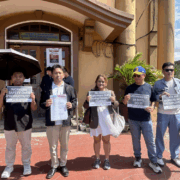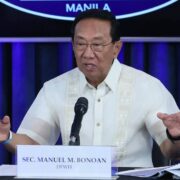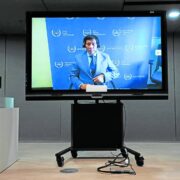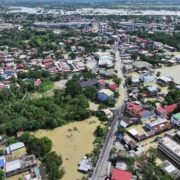A delicate balancing act

In an attempt to strike a delicate balance between protecting farmers’ incomes and keeping prices of basic goods as low as possible for consumers, President Marcos last week approved a “trigger-based” rice tariff mechanism that will adjust import duties depending on global prices of the country’s primary staple.
Under Executive Order No. 105 signed last Friday, the current 15 percent tariff on rice brought in from abroad—mainly from neighbors Thailand and Vietnam—will be kept in place until the end of this year.
But starting Jan. 1, 2026—when rice imports will be allowed to resume—the tariff will be adjusted by 5 percentage points for every 5 percent movement in world market prices, although it will not go below 15 percent or above 35 percent.
“The automatic tariff mechanism aims to ensure price stability for Filipino consumers while safeguarding fair income for local farmers,” said the order, which amends the June 2024 EO 62 that slashed rice tariffs from a high of 35 percent to a flat 15 percent until 2028 to force down rice retail prices and cool inflation.
As to what the starting tariff will be, the Department of Agriculture (DA) has until Dec. 15 to determine, with Agriculture Secretary Francisco Tiu Laurel Jr. saying that it will likely not stay at 15 percent.
Twin mandates
By making the rate more flexible, the Marcos administration hopes to smooth out the volatility in rice prices and keep them at a level that will make it profitable for farmers to keep planting rice, and at the same time, within reach of consumers who allot a big part of their everyday budget on rice, which is also one of the key drivers of inflation.
To ensure that the policy will bring in the intended benefits, the President created an Inter-Agency Group on Rice Tariff Adjustment composed of agencies under the economic cluster to closely monitor global rice trends, determine trigger levels, and determine when the adjustments are warranted.
On paper, the “trigger-based” tariff scheme seems like a Solomonic solution to fulfill the government’s twin mandates to take care of both the rice industry including farmers and consumers. But its success will rest primarily on the ability of the newly formed interagency group to implement the tariff adjustments at the right time and at the right magnitude.
It cannot afford to stray from closely monitoring global movements of rice prices as well as realities on local ground considering the dynamic and opposing forces that are at play.
‘Recycled experiment’
Economists are pushing for lower tariffs and lifting of the import ban to lower consumer prices on one side while farmers’ groups are calling for the maximum 35-percent tariffs on imports to protect the local industry and push up their income.
Last month, the Foundation for Economic Freedom, whose members include some of the country’s top economists, urged the government to immediately lift the import ban and maintain the rice import tax at 15 percent to keep inflation in check.
They argued that banning imports and possibly raising the tariffs to a high of 35 percent as floated by the DA would cause rice prices to increase and also “represent a significant setback to economic liberalization, consumer welfare, and overall national competitiveness.”
The Kilusang Magbubukid ng Pilipinas (KMP), on the other hand, is urging the Marcos administration to do the exact opposite and keep the tariffs at 35 percent, adding that the latest EO was “a recycled experiment” to hide the impact of rice liberalization that it claimed devastated local rice production and made the Philippines even more dependent on imports to feed its people. “Sa bawat pagbaba ng taripa, mas nalulugi ang mga magsasaka (With every reduction in tariffs, farmers lose more money,)” said KMP chair Danilo Ramos.
Clearly divisive
The Samahang Industriya ng Agrikultura (Sinag) shares this view, claiming that the longer reduced tariff remains in effect, the greater the damage will be to local rice farmers who are already reeling from depressed palay prices.
Sinag pointed out that the landed cost of imported rice at current rates is already down to P25 to P26 a kilo, thus even with a 35 percent tariff, imported rice would remain affordable and will put locally produced rice at a more competitive position.
“It is deeply disappointing that the National Economic and Development Authority (now the Department of Economy, Planning, and Development) continues to turn a blind eye to both the sharp decline in global prices and the plight of local producers,” said Sinag executive director Jayson Cainglet.
Given how the tariff issue is clearly divisive, the new body certainly has its job cut out for it as the Marcos administration puts this latest measure into effect.
Adjusting tariff rates by too little, too much, too early, or too late will have profound implications on the prices at which households buy rice, thus, it should pull the policy levers with great caution and intent to benefit the majority.

















US dollar still dominates forex markets